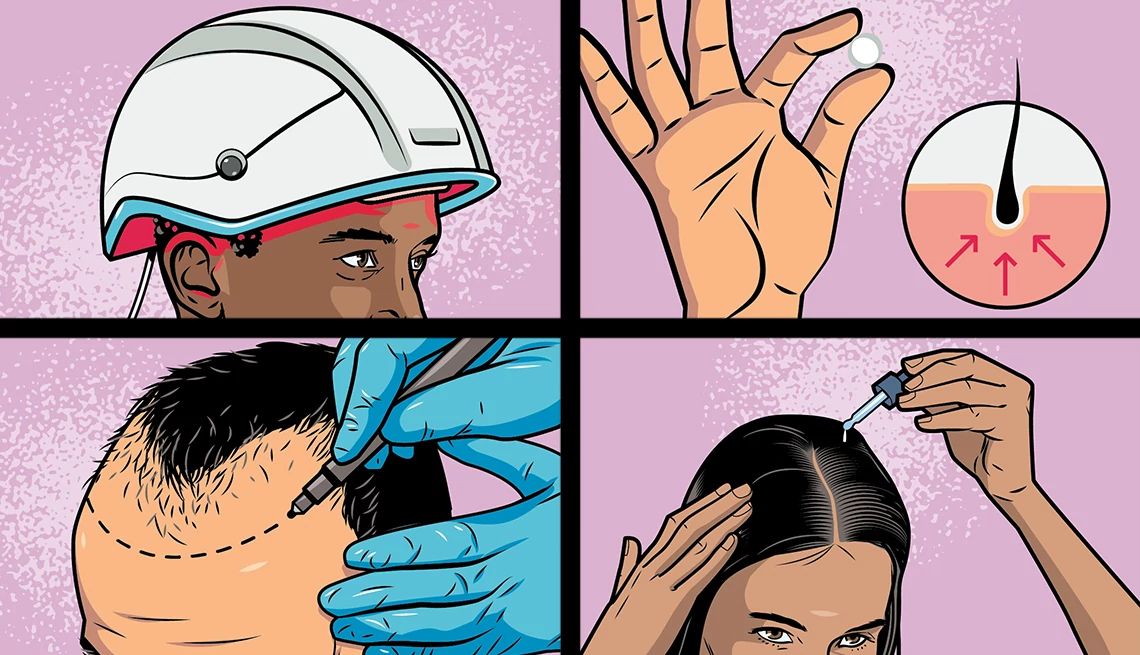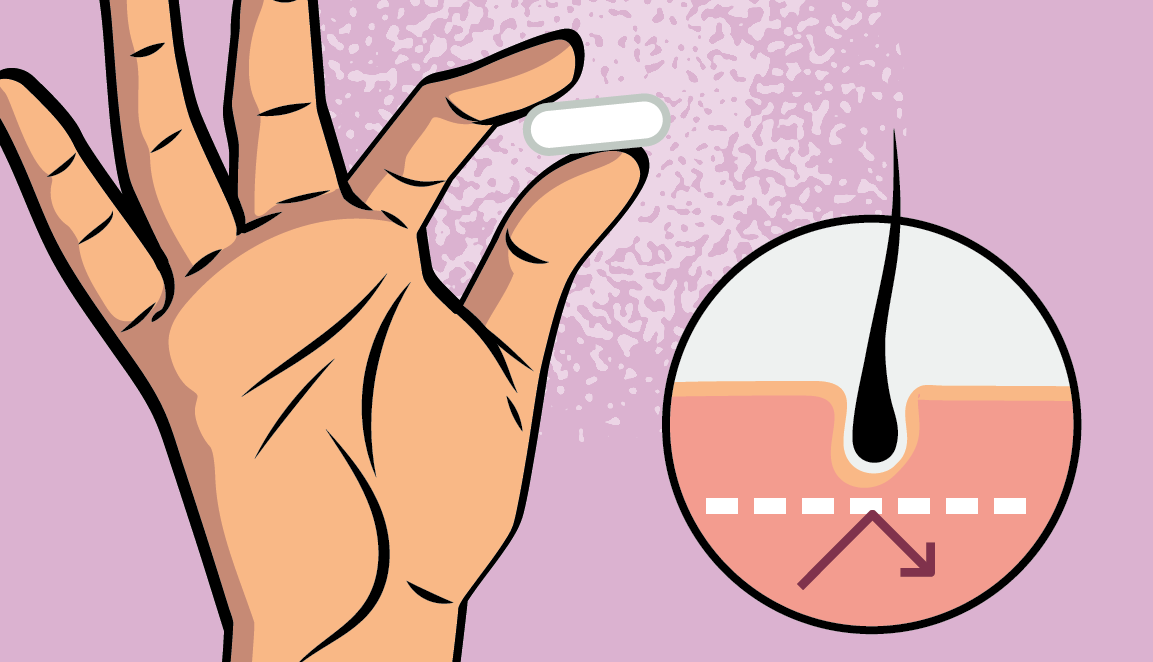AARP Hearing Center


Strands getting sparse? A common culprit is androgenic alopecia, a form of hair loss that strikes both men and women. And the risk increases with age, affecting up to 50 percent of men by age 50 and women especially after menopause.
We asked three physicians — Carolyn Goh, associate clinical professor in dermatology at UCLA; Brian Abittan, director of skin and hair rejuvenation and director of hair transplantation at Mount Sinai Health System in New York City; and Aanand Geria, dermatologist at Geria Dermatology in Rutherford, New Jersey — to give us the rundown on available treatments.
Topical Minoxidil
What it is: A solution or foam applied to the scalp to stimulate hair follicles.
Pros: Well tolerated. Affordable. Good evidence it can help reverse hair loss. Available over the counter.
Cons: Greasy, sticky and time-consuming to apply. Side effects include irritation, facial hair growth and in rare cases lightheadedness, heart palpitations or headaches.
Cost: $15 to $50 for a three-month supply.
Low-Level Light Therapy
What it is: Waves of light beamed onto your scalp regularly to improve circulation, which is thought to promote hair growth.
Pros: Easy-to-use cap that is typically worn for 10 minutes a day. Can be done at home.
Cons: Costly. Must be used indefinitely. Evidence of efficacy is mixed.
Cost: For at-home treatment, a one-time cost of $500 to $3,000 for the apparatus.


Finasteride
What it is: A prescription pill to block the production of dihydrotestosterone — a hormone — and reduce or even reverse hair loss.
Pros: Relatively safe and well tolerated. Effective option to decrease shedding.
Cons: FDA-approved only for men, but prescribed off-label for women. Small risk of erectile dysfunction in men or sexual dysfunction in women.
Cost: $10 to $20 per month.




































































You Might Also Like
Bobbi Brown’s Best Beauty Tips for Women Over 50
Jones Road Beauty founder shares her personal hair, makeup and style secrets6 Solutions for Hair Issues Facing Women Over 50
Products that will pump up hair’s volume, improve texture and boost shine25 Great Ways to Save on Beauty Buys
Stay beautiful and on budget